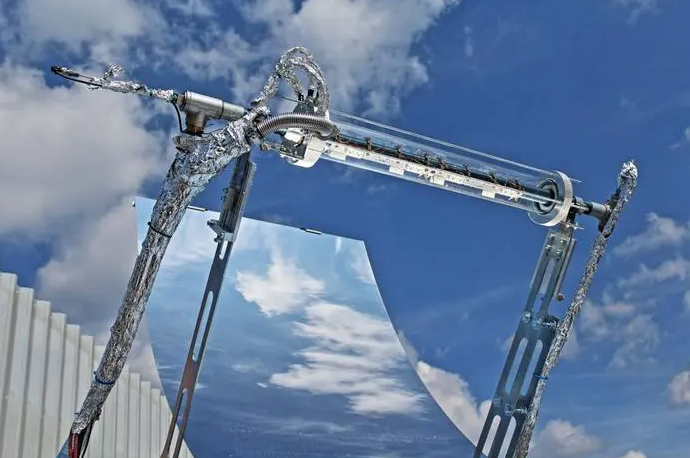A parabolic solar module capable of producing heat and electricity at the same time, with high-efficiency rates. It is the concentration version of Thermophotovoltaic (TPV), a hybrid technology with a small but solid market niche. Currently, most TPV panels use direct sunlight without any “help“. However, the idea of adding refractive or reflective surfaces to increase yield is not new.
The combination of photovoltaic, solar thermal, and concentrators has made its way into the world of research since the late 70’s, and early 80’s. But progress in the field has been slow and technology has always come up against two major problems: high costs and structural complexity. The thermal part of the collector must provide the highest possible temperatures, while the photovoltaic one must not exceed the specific temperature limits for the cells used; if possible, it should be kept as cool as possible for the cells to function as efficiently as possible.
The parabolic solar module of ECOSun
Among the several projects launched globally on the topic, there is also ECOSun-Economic CO generation by Efficiently concentrated sunlight, led by Armin Buchroithner of the Institute of Electrical Measurement and Sensor Systems of the University of Technology of Graz (TU Graz)in Austria. The ECOSun consortium has developed a parabolic solar module that uses economic and robust photovoltaic cells and a mirror collector produced through industrial manufacturing methods, such as injection molding technology.
On paper the operation is simple: the parabola concentrates the sun’s rays on the photovoltaic cells arranged along the focal line. The heat is transferred from these in a heat transfer fluid that flows along the back of the same in a system of pipes. Thermal and electrical energy can thus be used for heating and cooling buildings or various industrial purposes. The researchers who took part in the project also optimized the cooling of the photovoltaic cells, increasing the usable heat. At the moment, however, the university has not yet published technical data.
“This approach has the potential to contribute significantly to the energy transition,” says Buchroithner. “So far parabolic solar systems have been placed almost exclusively in particularly sunny regions such as Spain or the Persian Gulf. However, our tests have shown that it can also be useful here in Austria or other regions to replace fossil fuels in industrial processes”.

